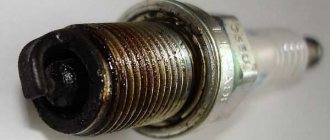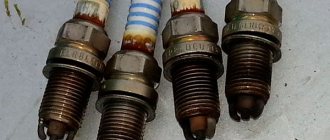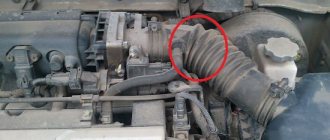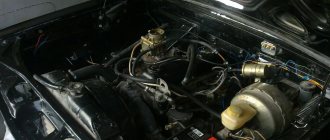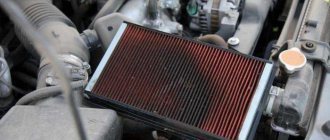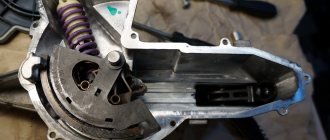One way to assess the proper functioning of the power plant is to check the condition of the spark plugs. Any disruption of the processes taking place in the cylinders will immediately leave marks on these elements. In most cases, spark plugs provide insight into the operation of the ignition and power systems. But there are also symptoms indicating problems with other components of the power plant.
One such sign is the detection of oil traces on the spark plugs. Lubricant on the spark plugs can appear due to a number of specific malfunctions. Some of them do not pose any particular danger to the engine, but others are a signal of serious problems that can lead to expensive repairs.
Causes of oil on spark plugs
If the candles are covered with oil, then first of all it is necessary to determine exactly which part has the most of it. Many car owners are faced with a situation where only the threads and body are coated with lubricant, while the electrodes are dry and have a normal color (light brown). But it also happens that the entire base ends up in oil.
At the same time, in addition to traces of lubricant on the spark plugs, a malfunction with the engine manifests itself in other ways - deterioration in dynamics, increased exhaust smoke, oil burns. In order for it not to be the cause, it must be eliminated.
Most often, the appearance of grease marks occurs due to wear and damage:
- Valve guides.
- Oil seals.
- Valves.
- Cylinder head gaskets (cylinder head).
- CPG elements (cylinder-piston group).
Traces of lubricant on the body and threads are mentioned for good reason, since oil can get onto the spark plug not only from the cylinder, but also due to external leaks. So, on some cars, a loose fit of the cylinder head cover gasket is considered a “disease”. As a result, candles seep through leaks and get into the wells. Thus, oil accumulates in the wells of the spark plugs and when unscrewing the spark plugs, both the body and the threads are simply smeared in the accumulated lubricant. The problem is “treated” by replacing the gasket and coating it with sealant.
Soot coloring
During long-term operation, the SZ cannot be perfectly clean, and many people are interested in what the carbon deposits should be like if the car is in good working order, and why this is not always the case. In a situation where the car engine is absolutely in good working order, when you turn out the spark plug, you can see a brownish coating - from light to dark shades of brown. This indicates that the electrode burned out evenly during the operation of the car. If all auto components operate correctly, the service life of ignition elements usually reaches 30,000 km. Modern models of two and three-electrode spark plugs may not need to be changed twice as long. If, upon inspection, the car owner discovers that the spark plugs have carbon deposits of completely different colors, this means that there are obvious irregularities in the operation of the engine. Let's look at the possible types of soot.
White soot
White deposits on spark plugs usually come in several shades, which indicate slightly different problems:
- Grayish tint. This is clear evidence of the use of low-quality fuel. In this case, it is enough to unscrew the SZ and clean it, and they will be ready for further use. An important condition for eliminating the problem will be changing bad gasoline.
- Shiny deposits combined with erosions on the contact electrodes. In this case, you can be firmly sure that the spark plugs are overheating. This situation is often caused by low-quality fuel, incorrectly selected fuel protection, or problems with the cooling system. After eliminating the causes of soot formation, the spark plugs may have to be replaced. In this case, you will need to pay more attention to their thermal characteristics.
- White coating. It should not be confused with carbon deposits. Plaque occurs due to antifreeze entering the engine cylinder. Quite often this process is accompanied by the appearance of white smoke from the exhaust pipe. If you smell the candles, you can feel a pronounced sweetish smell. To eliminate this problem, you will need to eliminate the ingress of antifreeze and only then replace the ignition elements.
Consequences of a malfunction
If you ignore the problem of lubricant getting into the cylinders, which is indicated by traces of oil on the spark plug, the consequences will be very serious. The lubricant is not able to completely burn out in the cylinders, moreover, the part of it that does burn out becomes the cause of a large amount of soot.
This carbon deposits on the internal surfaces of the cylinder, which affects the processes taking place inside it, and also leads to the occurrence of rings. Because of this, the amount of oil entering the combustion chamber increases sharply. As a result, the engine power drops significantly, and it begins to intensively consume lubricant and fuel. Restoring the engine after this is quite difficult and financially expensive, since a major overhaul is required.
How to correctly assess the condition of spark plugs
Plaque on spark plugs, which forms during operation of a car, can provide fairly accurate information, but the test must be carried out in compliance with a number of rules:
- You can evaluate the plaque only after a run of 150–200 km, always with new or well-cleaned SZ.
- Don’t panic if, during the cold season, you hear slight interruptions in the engine’s operation, and at low speeds the ignition elements become covered with a black coating. This is the result of the fact that at low temperatures the working mixture undergoes mandatory enrichment, which, if the engine is slightly warmed up, will not be able to burn completely. If there are repeated interruptions in the operation of the motor, it is worth paying special attention to the condition of the high-voltage wires.
- When visually diagnosing elements, it is worth remembering that they can self-clean only at high temperatures, which are only possible when the engine is running at high speeds.
What can be done
If the spark plugs are filled with oil, then identifying the cause is not so difficult, but eliminating it can be a troublesome task.
If we talk about the case of a leaking valve cover gasket described above, then everything is very simple - oil is noticed in the spark plug wells - the sealing element requires replacement.
It’s worse if grease is found on the bottom of the spark plug (and it can be on one, several or all spark plugs).
A compression test will partially help here. If the rings are stuck or the valves do not fit tightly, it will certainly decrease. If there are traces of lubricant on the spark plugs, but the compression is fine or even increased (which happens due to the oil present in the combustion chamber, which acts as a seal in the existing gaps), you will have to disassemble the cylinder head to assess the condition of the oil seals and valve guides. In general, it is the last two elements that are the most common reasons for lubricant getting into the cylinders, including spark plugs.
Do not forget that the engine itself has a certain resource. If it is noticed that all the spark plugs are in oil, and the compression has dropped significantly below normal, it may be worth considering a major overhaul, since the degree of engine wear has reached critical levels.
Useful tips
As you can see, replacing the sealant under the valve cover is not a complicated procedure. The main requirements include thorough cleaning of the old layer and proper application of fresh sealant to the surface.
The applied layer must be even and no interruption is allowed. It should also be noted that the sealing compound must also be used to treat the joints between the connections of the spark plug wells, having previously removed the old sealant from there.
Let us add that these areas, as a rule, are generously covered with a sealing compound, which will require some effort to fully clean such surfaces. To process the connections of the spark plug wells, a special red sealant is used, which can be purchased at car dealerships.
If only one engine needs to be repaired, then it will be enough to purchase a small tube of heat-resistant sealant. You can also read about selecting the best sealant for the engine in our separate article.
It should be noted that the use of sealant if the valve cover on a particular internal combustion engine is installed through a rubber gasket is undesirable. In this case, it is necessary to purchase a new high-quality gasket, after which the mating surfaces are checked. Next, the new valve cover gasket is installed in place, after which the valve cover is tightened, taking into account the order and torque of the fasteners.
Cleaning spark plugs - using proven methods
Timely cleaning of spark plugs allows you to extend their life and stabilize the operation of the ignition system and the engine as a whole. Several methods can be used to clean carbon deposits. The simplest and most convenient is cleaning at home using fine-grained sandpaper or a metal, nylon or even toothbrush. Carefully clean the contaminated surface with a brush, then sand with fine sandpaper. The most important thing is to try not to deeply scratch the surface and not to disturb the established gap between the electrodes, so do not use rough objects (screwdrivers, awls) for cleaning.
The second way to wash off the deposits that have formed is to use available household chemicals and various detergent compositions. Degrease the contaminated surface, then dip the candles in a solution with detergent and leave them for several hours; acetone, vinegar, and household chemicals are well suited for these purposes. To cleanse yellowish or red plaque, you can even use affordable products such as Cola or Sprite. They contain orthophosphoric acid, which facilitates easy cleansing. When using ammonium acetate or another acidic solution, you must first calcinate the candles and heat them to a high temperature, and then sharply lower them into the acid solution for several minutes.
High-quality cleaning of spark plugs can also be carried out in specialized car services. As a rule, they offer cleaning with special ultrasound or sandblasting.
The working part is covered with black soot
Black spark plugs are a symptom indicating that the fuel mixture is too rich (the proportion of gasoline is increased above normal). Therefore, the fuel does not burn completely and forms a layer of soot on the chamber walls and spark plug electrodes.
An additional sign of this problem is black or dark gray smoke from the exhaust. When over-gassing, small flakes of soot may fly out of the pipe.
There are quite a few reasons for the enrichment of the air-fuel mixture, the most common ones look like this:
- One of the key sensors has become unusable - air flow, temperature, throttle position or oxygen content in the exhaust (lambda probe). The controller activates the emergency program and prepares the mixture according to other indications.
- Carburetor malfunctions (clogged air jets, worn throttle valves, etc.).
- Failure of the pressure regulator in the fuel line.
- Wear of nozzles - nozzles “overflow” and leak when the power unit is not working.
- Problems with sparking - the power of the electrical pulse is not enough to ignite the combustible mixture normally.
Important! If during the diagnostic process you find black spark plugs, the fault should be found immediately. Increased gasoline consumption is only part of the consequences of excessive enrichment.
There are others, not so harmless:
- some of the unburned fuel penetrates the crankcase and dilutes the oil, accelerating the wear of engine parts;
- the other part gets into the exhaust manifold, which is why shots are periodically heard in it;
- soot clogs the expensive catalytic converter - it has to be cleaned or replaced with a new one;
- The service life of the spark plugs is sharply reduced.
When running on a rich fuel mixture, the engine “chokes”, unstable idling and skipped cycles are observed. When a certain amount of soot heated to a high temperature accumulates in the chambers, a “pseudo-diesel” effect occurs - after turning off the ignition, the engine does not want to stall and makes 2-10 crankshaft revolutions. The reason is hot soot, igniting the combustible mixture without a spark.
What color is considered normal?
The performance of the gasoline power unit is indicated by spark plug electrodes painted in a light brown tint, without oil deposits and soot. A similar picture is observed in completely new engines and engines that have undergone a major overhaul.
If the color of the working part differs from the specified one, it is advisable to carry out further diagnostics and identify the cause of the problem. Moreover, the engine itself is not always the culprit. What color options are there for spark electrodes:
- light gray or white;
- black;
- brick or frankly red tint.
In addition to all sorts of colors, the candle skirt is covered with various deposits - soot, brown soot, or may simply look wet. These phenomena are also considered signs of various malfunctions. It is proposed to consider each situation in more detail.
Cleaning the ignition elements
Spark plugs do not always require immediate replacement; sometimes they can simply be cleaned and the possible cause of deposits can be eliminated. This procedure can be carried out in two ways:
- Mechanical cleaning method. It consists of using simple sandpaper or a small wire brush. Despite the simplicity of the method, it has a number of disadvantages. With such cleaning, the coating on the SZ electrodes can be damaged, and simple scratches can cause increased accumulation of deposits.
- Chemical method. It is more preferable, especially for removing black deposits. The car enthusiast will need to prepare simple cleaning products, a toothbrush and a rag. The elements need to be soaked for about half an hour and then rinsed well. After drying, the candles can be used again.
